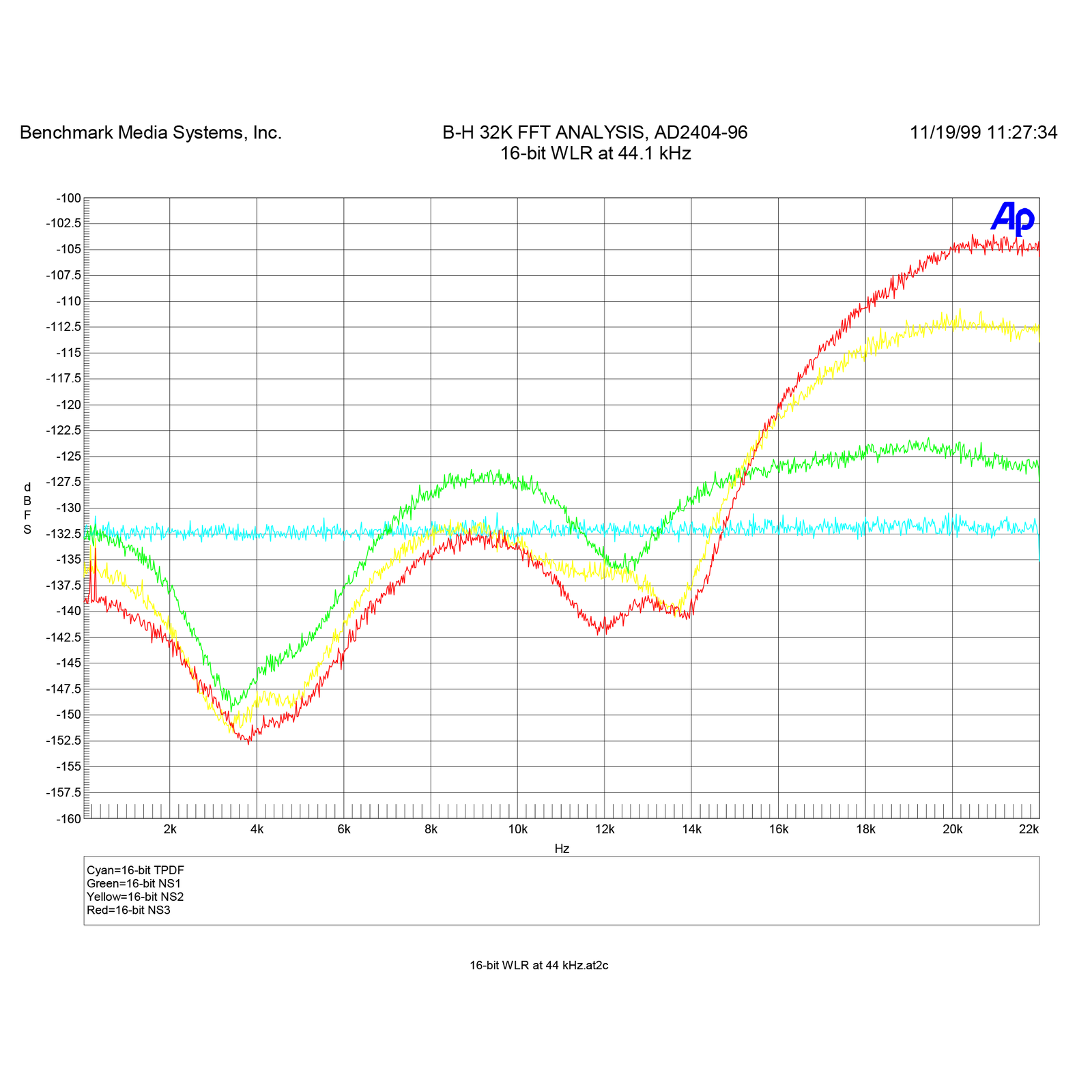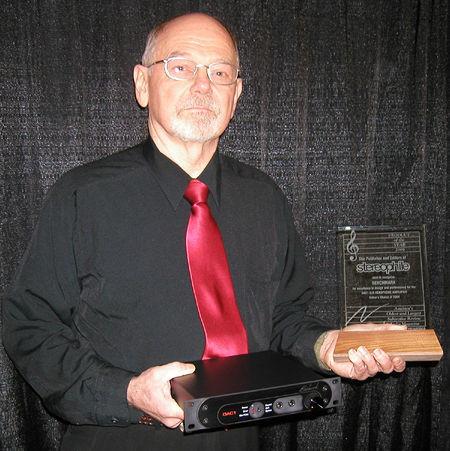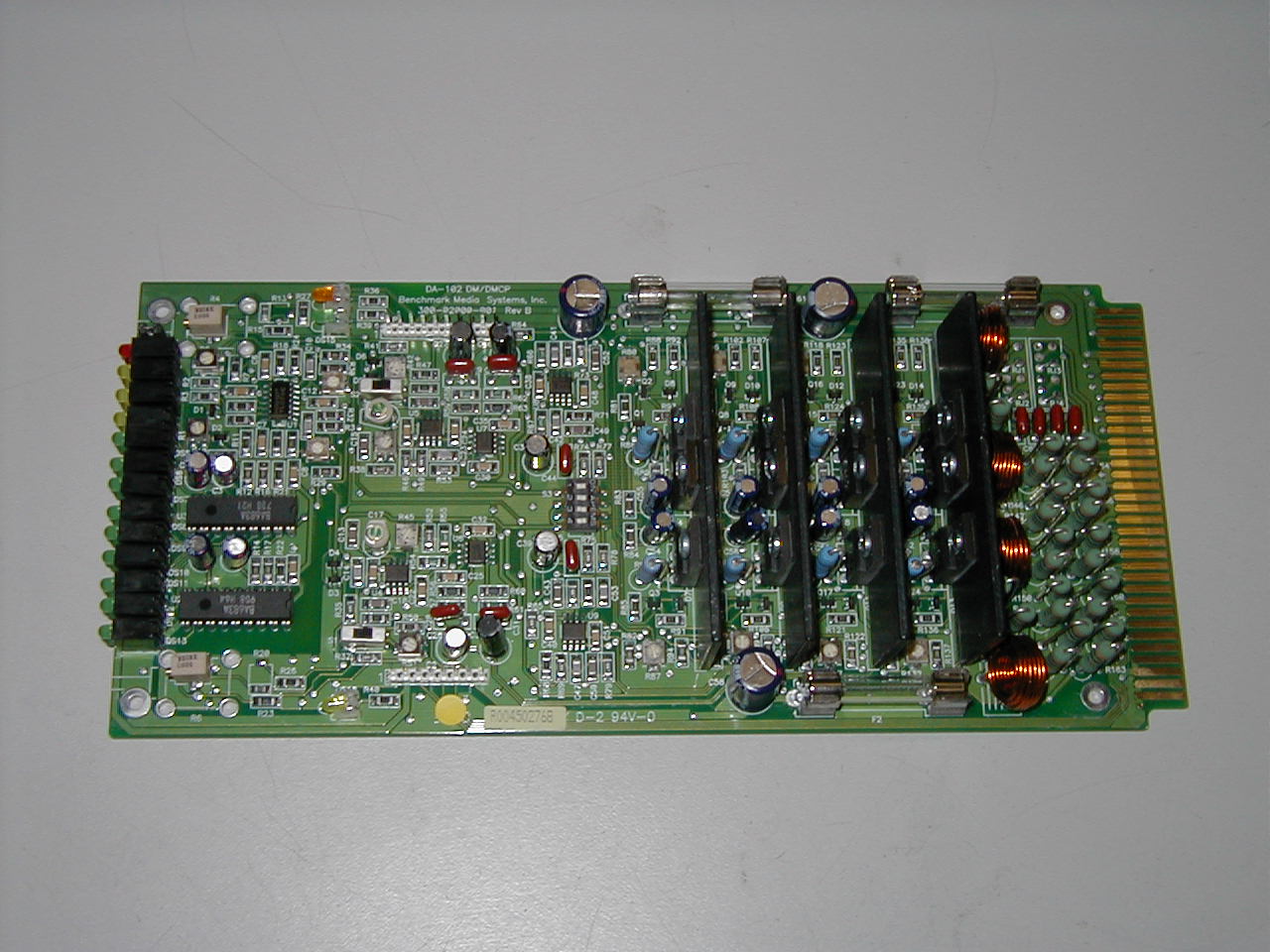Buy one component and save 10% on up to 2 cables. Buy 2 components and get 4 free cables. Free shipping on USA orders over $700. Low-cost shipping to Canada.
Buy one component and save 10% on up to 2 cables. Buy 2 components and get 4 free cables. Free shipping on USA orders over $700. Low-cost shipping to Canada.
Audio Application Notes
Using the MPS-420 - One Engineer's Experience
by Benchmark Media Systems January 01, 2000
By Alan Silver President, Connoisseur Society, Inc. New York, NY
In 1984 I was offered the opportunity to record the legendary jazz pianist, John Lewis, in the 24 Preludes and Fugues from J.S. Bach's Well Tempered Clavier, Book One. It was a large assignment intended to take five years with completion scheduled for 1989. Each prelude was to be recorded exactly as written on solo piano and each fugue was arranged by John Lewis for piano, bass, guitar and varied combinations of strings. In addition, an interlude of jazz improvisation, played by Lewis, was to be integrated seamlessly into each prelude and fugue.
The record company was Philips of Japan, and they wanted me to match the solo piano sound...
Measuring Mic-Preamp Noise
by Benchmark Media Systems January 01, 2000
By Allen H. Burdick
To perform valid noise level measurements, two specific conditions must be established:
- A 150 Ohm source impedance
- A 20 kHz measurement bandwidth
The microphone preamplifier must have the proper source impedance at its input. If it does not, the preamp will amplify the noise of its internal bias resistors, resulting in much higher noise voltage. Typically, the easiest way...
Is Your Mic-Pre Clean Past 30 kHz?
by Benchmark Media Systems January 01, 2000
By Allen H. Burdick
Who Should Care?
You Should Care!
High-Frequency Intermodulation Distortion is a Critical Mic-Pre Parameter!
The mic-pre function is one of the most difficult challenges facing the audio engineer. A mic-pre is often the limiting factor in the audio chain. When selecting a mic-pre, everyone looks for...
Word-Length Reduction of Digital Audio
by John Siau November 19, 1999
Benchmark NN™ and NS™ Word Length Reduction Systems
The AD2404-96 and the SONIC AD2K+ are equipped with two state-of-the-art world-length reduction systems: The Benchmark NN™ (Near Nyquist) system, and the Benchmark NS™ (Noise Shaped) system. Unlike most competitive systems, the Benchmark NS™ system is based upon the most current psycho-acoustic models. Furthermore, both Benchmark systems are unique in that they were optimized while factoring in the noise contribution of the recording environment.
A Clean Audio Installation Guide™
by Benchmark Media Systems October 24, 1997
Benchmark's "Clean Audio Installation Guide™"
"Required Reading!"
By Allen H. Burdick
 This 24 page guide has been very popular. It has been hailed as “required reading for all broadcast engineers” by Richard Sequerra.
This 24 page guide has been very popular. It has been hailed as “required reading for all broadcast engineers” by Richard Sequerra.
“We were able to change our engineering standards throughout the CBC as a result of this paper.” - Tom Holden Manager, Systems Engineering - Radio, CBC Toronto.
This paper revolutionized broadcast audio in the 1980's. It moved the industry away from 600-Ohm interfaces and radically changed the way analog audio was handled in professional environments.
In many ways, this paper still impacts every product that Benchmark builds today. We think that you will find this classic paper as useful today as it was when it was originally published in the 1980's. Due to the popularity of this paper, Allen updated it several times. The links will take you to Allen's final 1997 version.
We agree with Richard Sequerra: This is your required reading assignment!
Building an Audio MicroScope™
by Benchmark Media Systems February 02, 1997
By Allen H. Burdick
Two inexpensive jack-mounted products from Benchmark Media Systems can be assembled into a very powerful test set we call The Audio MicroScope™. The Audio MicroScope™ is a tool to be used in setting up analog audio systems. Because of its extremely high gain capability, over 85 dB, it is particularly useful in hunting down signal interface problems, such as hum and buzz from RF interference, magnetic induction, and ground loops.
Building the L-R Null Test Set
by Benchmark Media Systems February 01, 1997
By Allen H. Burdick
In the process of broadcast matrix encoding and decoding, balancing amplitudes between the two channels of a stereo audio path is very necessary. It is necessary for the maintenance of proper headroom, dynamic range and, of course, separation.
From time to time, repair and maintenance must be performed on equipment. Returning the entire chain to a balanced condition when placing the equipment back in service, is very desirable. Most broadcast engineers have balanced a chain at the stereo generator using the L-R method. But why not balance the output of each piece of equipment throughout the studio and eliminate the trip to the transmitter? It could mean eliminating late nights, and for those who don't go off the air, it may be the only option.
While recording studios do not face the same problems as the broadcaster, much of what is recorded in a studio is broadcast. This technique, therefore, is also applicable to the maintenance of a final stereo path in a recording facility.
Using the HPA-1 as a Long-Lines Driver
by Benchmark Media Systems January 15, 1997
By Allen H. Burdick
The high current output configuration of the HPA-1 is ideal for use as a transformerless long lines driver. Conversion of the unit for this purpose, source, transmission line, and termination considerations will be discussed.
Metering 70 Volt Lines
by Benchmark Media Systems January 13, 1997
By Allen H. Burdick
A 70 Volt Meter Attenuator for Sound Reinforcement
It is often desirable to monitor the levels on distributed audio PA speaker lines, known as 70 volt lines. It's simple with the right tools. This app-note shows how.
Mix-Minus Applications
by Benchmark Media Systems January 01, 1997
By Allen H. Burdick
Radio talk shows are currently enjoying unprecedented success. If your station has plans to add a talkshow, you will face the problem of creating a mix-minus, a signal that returns all of the program audio, except the caller's own voice, to the caller. Otherwise, echo, caused by Telco system signal delays, can confuse the caller.
If you have a production console with...
When is a DA not a DA?
by Benchmark Media Systems January 01, 1997
The Role of an Audio Distribution Amplifier in Professional Audio Systems
Let's face it, an Audio Distribution Amplifier (DA) is not absolutely necessary for the distribution of audio! You can daisy chain your audio from input to input these days, generally with minimal loading on the source. However, what happens if a piece of equipment on the chain fails, or someone inadvertently cuts the audio pair, or you wish to remove a piece of equipment while on the air? Well, of course, that's why we install DAs in the first place. The DA is an insurance policy. But like any insurance policy, you'd better be sure of your coverage before you need to make a claim. To examine our insurance coverage, let's review the basic criteria for good audio transmission.
Aspects of Sampling, Oversampling, Quantisation, Dither and Noise-Shaping, as Applied to Digital Audio
by Benchmark Media Systems November 30, 1994
By Christopher Hicks
"The aim of this article is to dispel as many of the myths surrounding the conversion of audio signals to the digital domain, and back to the analogue domain, as possible, without the aid of mathematics and (much more difficult) without the aid of diagrams."
Copyright, Christopher Hicks, November 1994. V1.11
Voltage Transmission for Audio Systems
by Benchmark Media Systems January 01, 1980
By Richard L. Hess, Audio-Video Systems Engineer, American Broadcasting Company, New York City
"The benefits of using a voltage audio transmission system in broadcast facilities is investigated. State of the art microphone preamplifier requirements and an ideal voltage system distribution amplifier are outlined. The application of the Peak Program Meter to the new systems and the modified installation at WABC-TV are covered."














